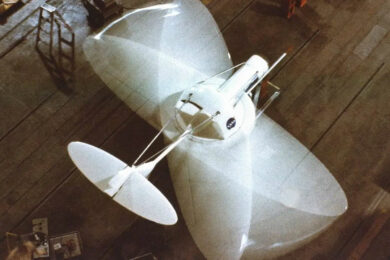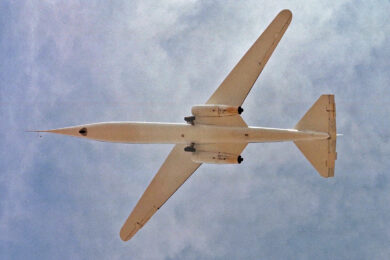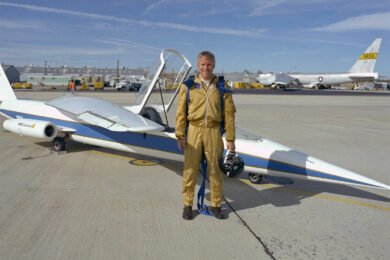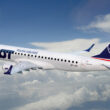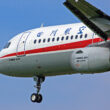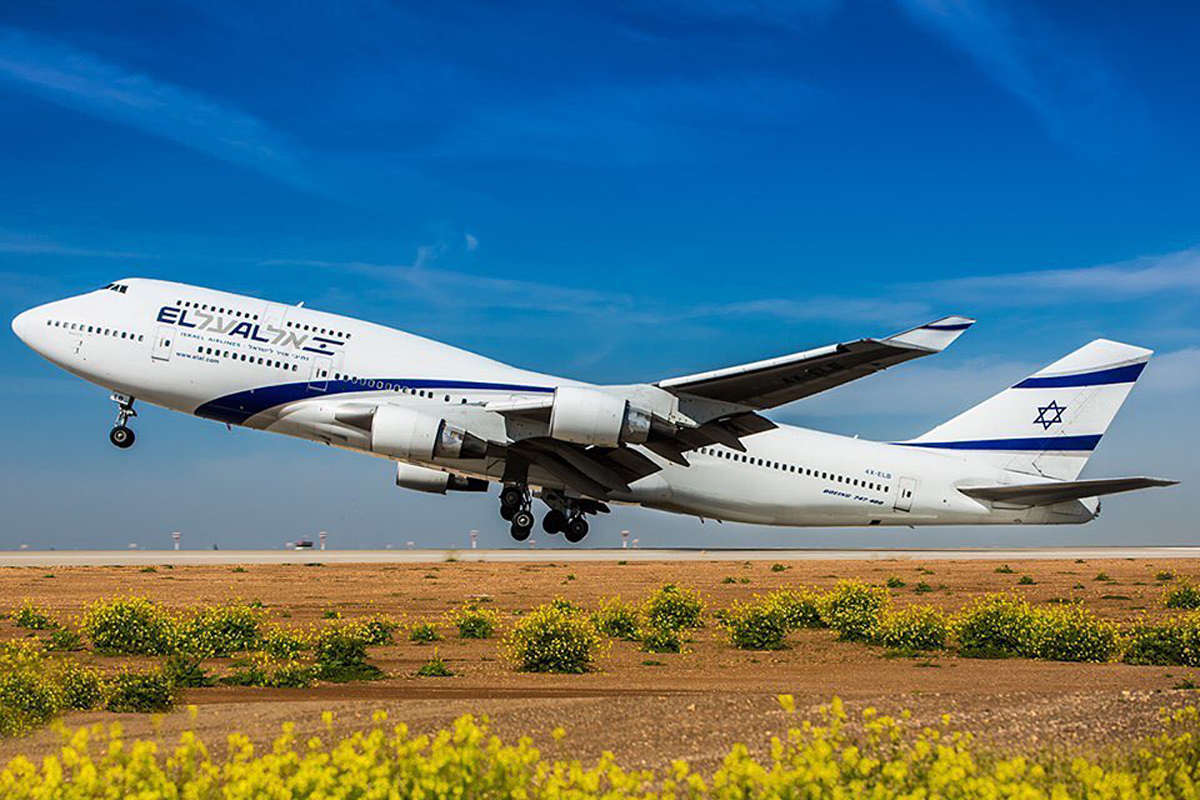Flight close to the speed of sound was a huge challenge for aerospace engineering as it soon became clear that the wings of 1940s planes were not as efficient as the speed increased.
The Germans noticed this while researching their first jet aircraft and the swept wing concept was the natural way to slow shock waves that plagued the pioneering designs.
However, in 1942, designer Richard Voght came up with an unusual idea, the oblique wing. He proposed an aircraft with a one-piece pivoting wing on the upper part of the Blohm & Voss P.202 fuselage.
Follow Air Data News: WhatsApp | Google News | Instagram | LinkedIn | Twitter | Facebook
Thanks to this, the plane could use the wings in a perpendicular position during takeoffs and landings (low speed) and gain efficiency at high speeds by reducing the wingspan of the P.202 by an angle of 35º.
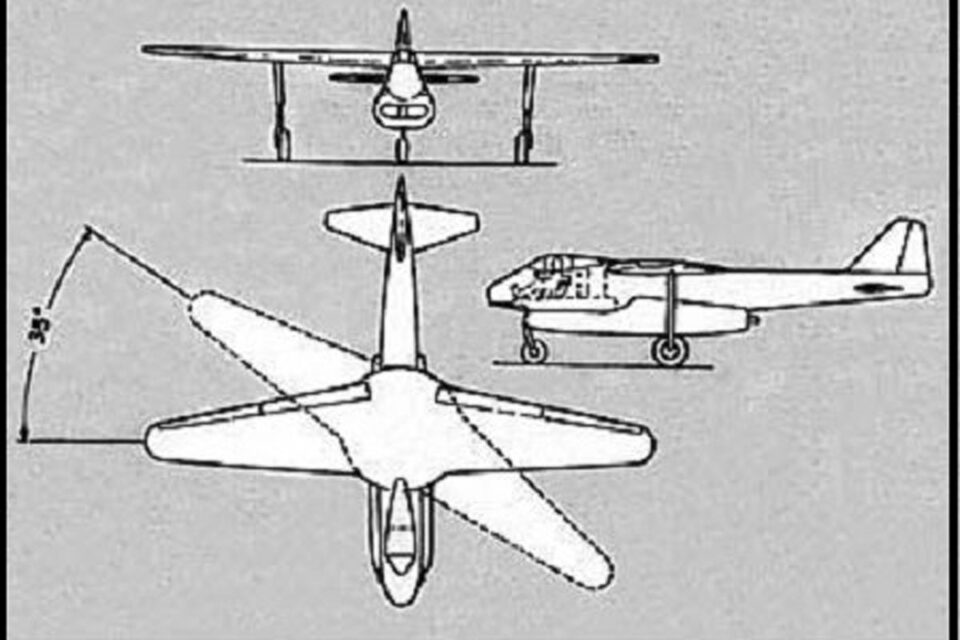
Although promising, the concept ended up not being applied.
Ames-Dryden-1
In the 1970s, NASA Ames Reserach Center aeronautical engineer Robert T. Jones decided to pursue the idea of a “scissor-wing” aircraft.
The first wind tunnel studies revealed that such an aircraft would be much more efficient at flying at speeds of up to Mach 1.4 than conventional designs.
To achieve this, the plane proposed by Jones could tilt its pivoting wing by up to 60º in relation to the fuselage.
NASA took the proposal forward, first with a small unmanned concept and then with the AD-1 (Ames-Dryden-1) test aircraft, a twin-turbojet-powered plane that vaguely resembled a glider.
Manufacturer Ames built the demonstrator in 1979 with support from Rutan Aircraft and using studies from Boeing.
The AD-1 first flew in December 1979 from Edwards Air Force Base, California, with NASA research pilot Thomas C. McMurtry.
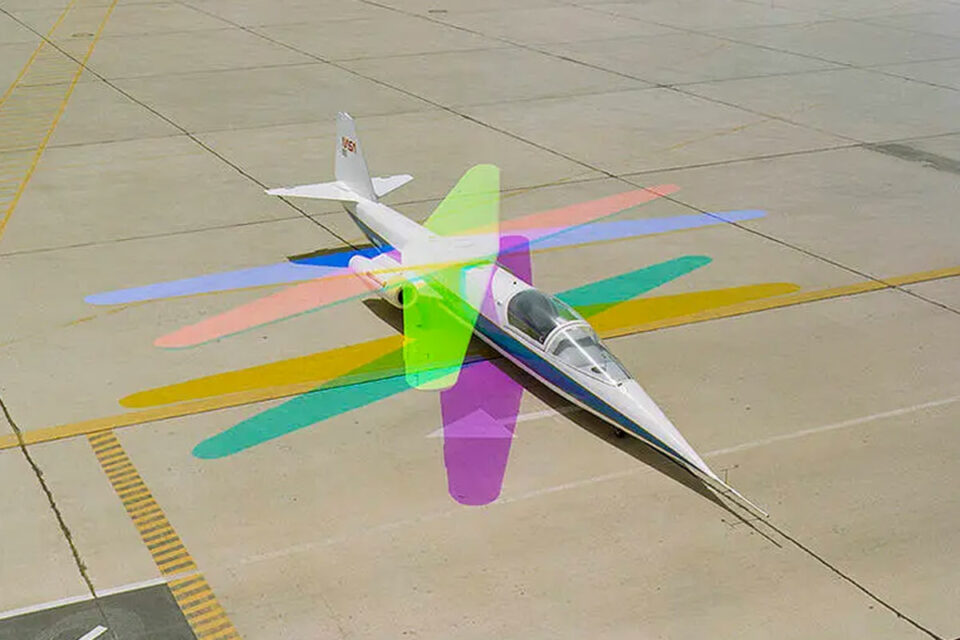
Despite having supersonic flight as its main attribute, the oblique wing concept ended up not being tested at high speeds on the AD-1, which could only reach 170 mph.
The reason for this was NASA’s philosophy of advancing a concept gradually, validating each step. The AD-1, therefore, was a demonstrator focused on confirming the low-speed characteristics of an oblique wing.
Built in fiberglass, the AD-1, however, limited some stiffness tests and also proved to be difficult to handle at high wing angles.
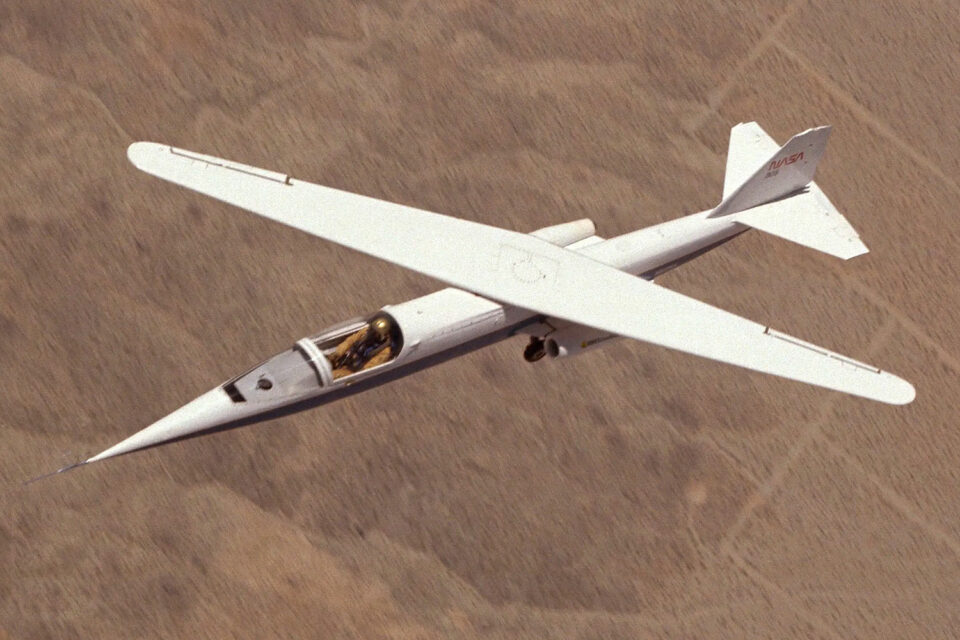
Application in commercial supersonic aircraft
The AD-1 flew 79 times until 1982 and confirmed several advantages of the configuration, however, NASA did not continue with the research, which predicted a new prototype capable of reaching transonic speeds.
The end of the program left several questions unanswered about how promising the configuration could be. In his study, Robert T. Jones predicted that the oblique wing could be twice as economical in supersonic flight as conventional designs.
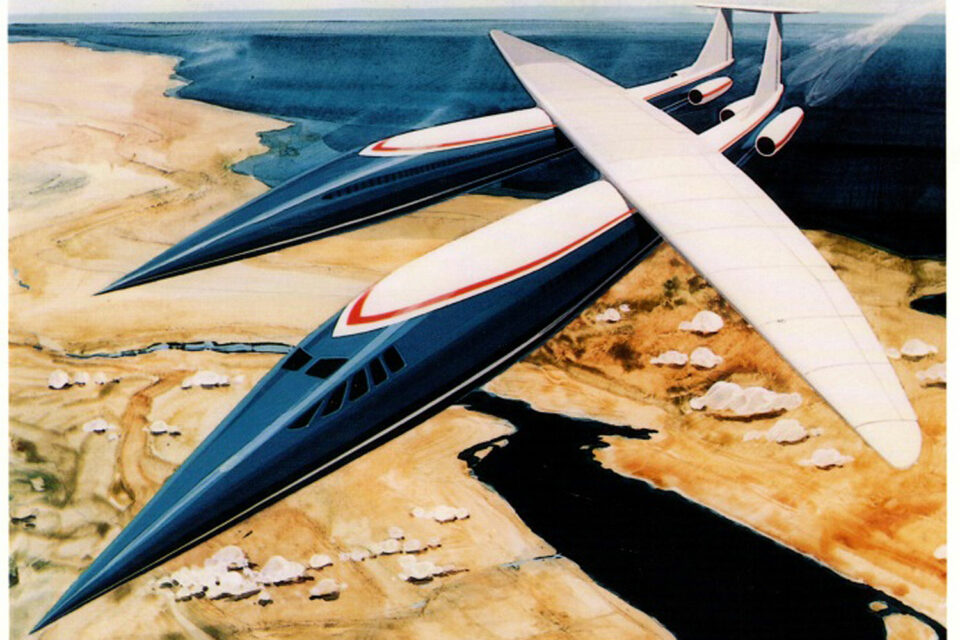
It was imagined that supersonic commercial planes, which require high fuel efficiency to be viable, could benefit from the scissor wing concept and even illustrations showing such jets appeared at the time, one of them with a double fuselage.
For Bruce Larrimer, author of the book “Thinking Obliquely”, which tells the story of the AD-1, the idea remains valid today.
“That oblique wing vehicles will fly is not in doubt,” he wrote. “The only question is when.”



